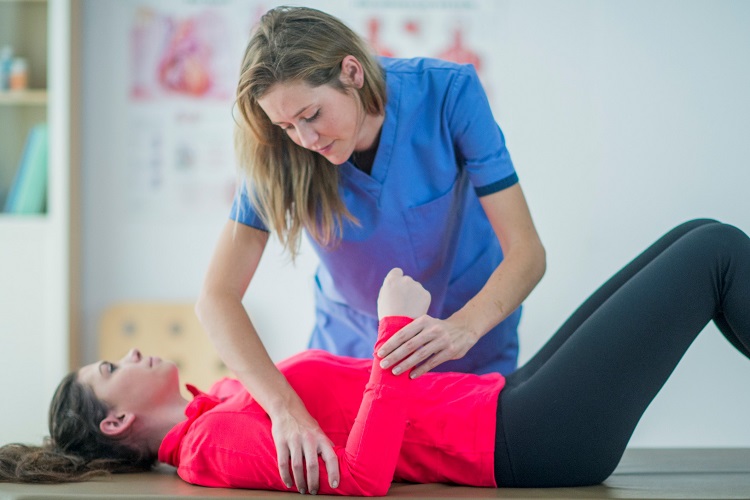In 2016 and at age 39, Denver Broncos quarterback Peyton Manning became the oldest player in history to compete in and win a Super Bowl. This incredible feat was undoubtedly the result of countless hours of hard physical training and commitment. But Manning also had a secret weapon to help.
According to Sports Illustrated, Manning flew Muscle Activation Techniques (MAT) founder Greg Roskopf to Indianapolis every week to help rehabilitate a career-threatening neck injury sustained in 2011. The magazine also reported that Manning signed with the Broncos in 2012 in part because Roskopf lives in Denver.
Far from a treatment just for elite athletes, MAT is a non-invasive technique designed to balance the muscular system of people of all ages and skills.
What is MAT?
According to the official website, MAT “assesses and corrects muscular imbalances, joint instability and limitations in range of motion.” Specifically, it aims to increase muscle contraction by improving communication between nerves and muscle fibers.
“MAT is a way to know what your brain understands about motion and where you have communication breakdowns between the brain and the muscles,” said Rachael Durnell of Clayton, who has been a MAT Specialist since 2006 and a MAT Master Specialist since 2014.
These breakdowns are identified through a series of assessments and treatments. The MAT practitioner observes the client as she performs a series of rotations. Concerns arise when there is limited range of motion or asymmetry between the two sides of the body.
Next is a muscle test, where the practitioner guides the client into postural holds. She then applies gentle force, which she instructs the client to resist. Inability to do so is a sign of muscle weakness.
When the practitioner identifies weak muscles, she performs a series of palpations. Unlike chiropractic work or massage therapy, which focus on the large muscle “bellies,” MAT targets specific muscle attachment sites.
“We palpate the origin and insertion of muscle because we find most of the brains of the muscles are at those points,” said Christine Kissel of St. Louis, who has practiced MAT since 2005. Palpating these points opens up communication between the muscles and the central nervous system, allowing for better muscle engagement.
Durnell adds: “Muscles start to shut down when they’re stressed. MAT reopens the dialogue. It’s like plugging in the lamp.”
After palpations, the specialist retests the muscle to see if it’s more responsive. The cycle of tests and palpations is repeated until the client is able to withstand force during posture holds.
Sessions typically last 60 to 90 minutes. There’s no set follow-up protocol; however, Durnell reports that her clients typically see best results with weekly treatments.
Who is MAT For?
There are three key ways that MAT benefits athletic performance, the first two being injury recovery and prevention. Athletes often try MAT when muscles are tight or painful. Durnell and Kissel report that MAT assessments often reveal muscle weakness that’s removed from the pain site.
For example, runners with flat feet often experience pain elsewhere, like shins or lower back. This is because athletes tend to overcome muscle weakness by using stronger muscle groups. “Athletes are the best compensators in the world because they are trained to get from point A to point B with maximum results,” Kissel said.
Chiropractic work and massage therapy often focus on treating pain, where MAT aims to correct the problem at the source. Durnell explains that MAT can reset the compensation pattern by training the weak muscles to fire more effectively. Similarly, MAT can help prevent injury by ensuring that all muscles are being utilized to their fullest potential.
The third situation in which MAT can benefit athletes is increasing performance threshold. “The more tolerant the body is to motion, the more it can do without breaking down,” Durnell said. “Overuse and fatigue patterns are common in every sport, but we see them a lot in sports that use repeats in training.”
One example is hill climbs in cycling. It’s common for athletes to rely heavily on the quadriceps while climbing, when actually muscles all the way from the feet to the shoulders should be engaged. MAT activates more muscles to maximize time to fatigue.
The same goes for other sports. MAT is one of several tools that can help runners go farther, climbers conquer more routes — and quarterbacks pass for more yards.
~~~~~~~~~~~~~~~~~
MAT in STL
St. Louis is currently home to two MAT Specialists, both interviewed for this story.
Rachael Durnell sees patients at her practice, The Root of Motion, in Clayton. therootofmotion.com
Christine Kissel works out of Triad Sports & Family Chiropractic in Clayton. triadchiropractic.net
For more information about MAT, or to find a specialist in another state, visit muscleactivation.com.
Author: Kim Yawitz is a freelance writer and registered dietitian in St. Louis.


Leave A Comment